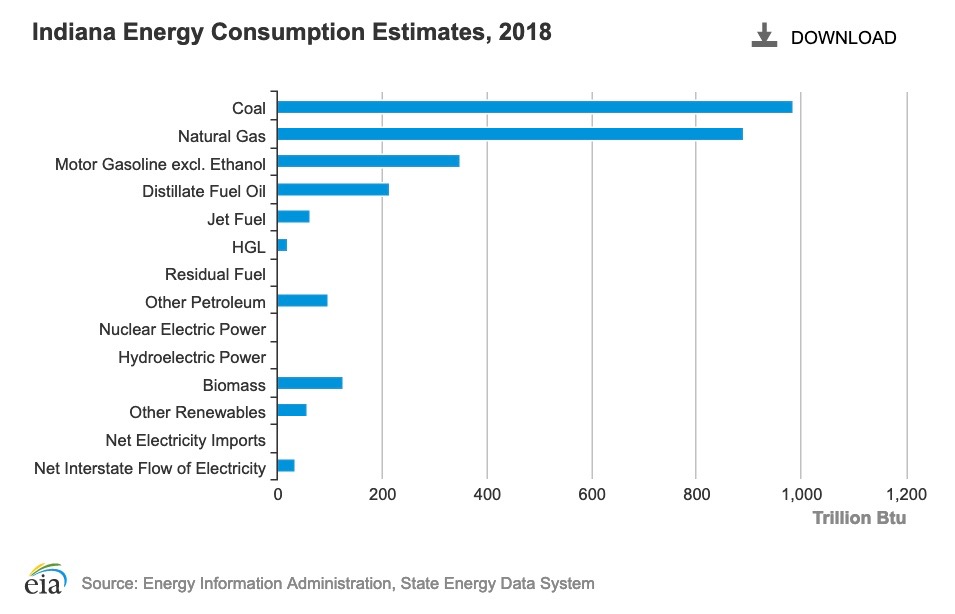Fact Checking the Indianapolis Star’s Misleading Story on PPP Loans to Fossil Fuel Companies
A recent Indianapolis Star article claims Indiana fossil fuel companies “may have gobbled up more than their share” of Paycheck Protection Program (PPP) loans designed to help businesses through the COVID-19 pandemic and that “clean energy was left behind.”
As the story’s headline suggests, the article strongly implies renewable energy companies were flat-out denied PPP loans by the Trump administration while fossil fuel companies received inordinate levels of relief.

However, there is simply no evidence presented in the article to back up those assertions. Here are the most egregious claims made in the article, followed by the facts.
CLAIM: “Indiana coal, gas and oil companies may have gobbled up more than their share of the government loans meant to help companies deal with the pandemic.”
FACT: The article doesn’t include a single example of an Indiana fossil fuel company receiving a loan larger than it was eligible to receive or a loan that it should not have received at all.
The article emphasizes that Indiana fossil fuel companies received between $42-$100 million in PPP loans, but doesn’t indicate that total exceeded any specific threshold that would raise a red flag. Instead, the reporter relies on vague speculation from “environmental advocates” to reach the subjective conclusion that the loans were excessive. As the following excerpt from the story shows, the speculation from “environmental advocates” has more to do with anti-fossil fuel advocacy than the alleged misappropriation of funds the reporter suggests occurred.
“For many environmental advocates, the Paycheck Protection Program data calls into question the number and size of relief funds allocated to an industry that was on the decline before the pandemic.”
CLAIM: “[C]lean energy was left behind.”
FACT: The story actually notes Indiana “clean” energy companies received millions in loans and doesn’t quote a single “clean” energy company representative claiming their PPP loan application was either denied or that loan they received was inadequate.
Oddly, the story’s two primary sources were not renewable energy company representatives. Instead, the reporter quoted representatives from the Indiana Renewable Energy Association (IREA) and the Sierra Club. The latter actively advocates for “Moving Beyond Dirty and Dangerous Fossil Fuels.”
One would think that a piece centered on the notion that clean energy companies were “left behind” would reach out to a representative from one of those companies to provide testimonial to support that claim.
Instead, IREA head Laura Arnold suggests the PPP monies should have been used to “set up to transition fossil fuel workers into other industries,” suggesting that the monies should have been “better used for a more viable industry.” Again, this is an example of anti-fossil fuel advocacy rather than an accusation of misappropriation of government monies.
And speaking of monies, the reporter’s conclusion than “clean” Indiana energy companies received “less than $5 million” is somewhat misleading as well. As the story notes:
“Only a handful, however, of Indiana companies in renewable energy received loans, according to the data. …
“Morton Solar & Wind and Midwest Wind & Solar each received between $150,000 to $350,000. One other, Inovateus Solar, got between $350,000 and $1 million. Other renewable or clean energy companies in Indiana may have received money, but it was not immediately apparent in IndyStar’s analysis of the data.”
Because PPP loans of $150,000 or less were not disclosed in data released from the White House and loans of more than $150,000 were presented in broad ranges, exact PPP loan figures for both the fossil fuel and “clean” energy were impossible to calculate. But that didn’t keep the reporter from deliberately presenting high-end estimates for fossil fuel loan recipients and more conservative estimates for “clean” energy companies.
CLAIM: The fossil fuel industry “was on the decline before the pandemic.”
FACT: Far from being in decline, fossil fuels supply 94 percent of Indiana’s energy.
As the following U.S. Energy Information Administration (EIA) graphic illusrates, Indiana relies heavily on fossil fuels to meet its energy needs.

To suggest an industry that supplies 6.7 million Indiana residents with an overwhelming majority of the energy they rely on to power their lives is “in decline” is spurious at best.
The above graphic illustrates why Indiana governor Eric Holcomb – like many governors from both sides of the political aisle across the United States, including Illinois Gov. JB Pritzker – designated the oil and natural gas industry as “essential” when COVID-19 pandemic restrictions began.
CLAIM: “Clean energy has been a booming industry in recent years and those jobs outnumber fossil fuel workers 3-to-1….”
FACT: The definition of “clean” energy jobs is very broad, inflating the total number of jobs in the industry.
The above claim is based Clean Jobs America report that identifies more than 3.2 million “clean” energy jobs. But a close look at the report reveals that more than 2.3 million (72 percent) of those jobs are “energy efficiency jobs,” which includes traditional HVAC positions and “high efficiency” HVAC positions. Wind and solar energy jobs make up just 14 percent of the 3.2 million “clean” energy jobs identified.
Similarly, a recent Clean Jobs Midwest report claims there were 86,800 “clean” energy jobs in Indiana before COVID-19, “five times as many” as in the fossil fuel industry in the state, according to one media report.
But a close look at that report reveals that 64 percent those 86,800 “clean” energy jobs are energy efficiency occupations, including 14,000-plus traditional HVAC positions and another 24,456 high efficiency HVAC positions. In fact, 863 natural gas “advanced transportation” jobs are listed among the “clean” energy jobs even though they should clearly be classified as fossil fuel jobs. Of the 86,800 total “clean” energy jobs identified in the report, 10,975 are in renewable energy. The latter figure is similar to the number of fossil fuel industry jobs in the state, 7,391 of which are in the oil and natural gas industry, according to Texas Independent Producers and Royalty Owners 2020 State of Energy Report. The American Petroleum Institute estimates the oil and natural gas industry supports 10.3 million U.S. jobs overall.
Conclusion
To be clear, the COVID-19 crisis has been devastating to the entire energy industry, resulting in hundreds of thousands of jobs losses combined across all sectors. Fortunately, the PPP loan program has alleviated some of the pain. That said, it is disappointing to see a media report that suggests it was borderline criminal to provide loans to fossil fuel companies that meet 94 percent of Indiana’s energy needs. Providing a platform for groups that feel PPP monies would have been better used to “set up to transition fossil fuel workers into other industries” that currently supply just three percent of Indiana’s energy seems more than a little tone deaf as well.
Now more than ever, Americans need access to affordable, reliable energy. What it doesn’t need is advocacy journalism aimed at misleading the public about a fossil fuel industry that can largely be credited for both of those things.

[…] Seth Whitehead, Illinois Petroleum Resources Board […]